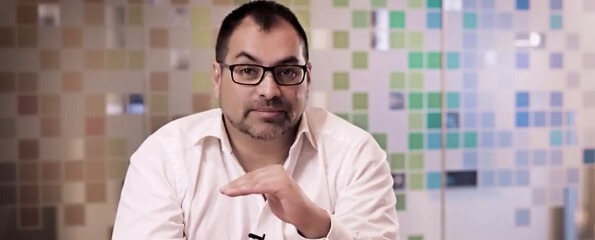Transcript
Hello, I’m Dr Andrew Dean, a medical oncologist from Perth in Western Australia, and I’d like to talk to you today about melanoma. Melanoma is the worst form of skin cancer and unfortunately we’re pretty prone to it here in Australia, due to the high ultraviolet exposure, our outdoor lifestyle and our genetic makeup which actually comes mainly from Northern Europe. This makes us susceptible to getting the skin cancer called melanoma, which is the cancer of the pigment layer which occurs at the base of the skin.
Australia is a fantastic country, we have great weather and lots of outdoor pursuits and because of that we get exposed to a lot of ultra-violet radiation. The ultraviolet radiation is thought to cause DNA damage to the pigment cells of the skin which can lead to development of the cancer there called melanoma.
Australia has the highest incidence of melanoma in the world. WA and Queensland are particularly bad.
There are two main peaks of melanoma. There is that associated with lifetime cumulative ultraviolet exposure, hence occurring more in older people and then there are younger adults who are prone to melanoma because of gene defects or faults in the DNA which lead to melanomas developing.
One of the issues with melanoma is that it can look just like another mole, just like another pigmented spot on our bodies. The melanomas tend to occur in two main areas- skin that’s exposed to ultraviolet radiation and skin that isn’t. This might sound a bit strange but melanomas can develop in areas of the body without sun exposure such as the back of the eye or sometimes even the internal organs, the genitalia and areas that really don’t see sunlight much at all. Most melanomas however do occur on skin that’s exposed to ultraviolet radiation.
You should always try and protect yourself from the sun; cover up, wear a hat, use plenty of sunscreen, avoid going out in to the sunlight at the worst time of day, and most weather forecasts nowadays actually tell you when the worst ultra violet is, even smartphone applications tell you when peak UV time is. So if you can avoid sunlight at those peak and more dangerous times, that’s the best way to go.
If you are exposed to sunlight, if you notice any pigmented spots on your body which look new, which look irregular in shape, which bleed, which become irritable to you, we advise you to seek medical attention as soon as possible.
Your general practitioner is a good place to start. GPs are very good at looking at moles, they can biopsy things if necessary, they can take high resolution photographs and they can also refer you to dermatologists, who are skin specialists who have extra equipment to inspect moles very, very closely under a microscope.
If the dermatologist doesn’t like the look of one of these lesions they can easily be excised and sent to the pathologist or biopsied to see if there is any suggestion of abnormal cells that might predict change to melanomas. The most important thing here is vigilance. Keep an eye on your skin. If your partner says, “I’ve not seen that mole before,” take it seriously and get it inspected by your GP or by a recognised skin specialist.
If melanoma isn’t just confined to the skin, if the melanoma has spread to a lymph node, what does that actually mean? It usually means that you need further special tests including a PET scan and possibly a whole body CT scan to see if the melanoma is isolated, in other words has it just spread to one lymph not or is there a suggestions that it has spread to the rest of the body.
In summary, bear in mind that Australia has a very high incidence of melanoma. Bear in mind what you can do to prevent it- cover up, sunscreen, avoid peak UV times. Keep an eye on your skin, listen to your partner, if they say I’ve not seen that mole before, and if you have any suspicions or any concerns, please see your doctor. Most melanomas can be picked up very early, can be removed surgically and cured.
Get on top of your general health
Find and instantly book affordable GPs within Australia
More information
 |
For more information on melanoma, its stages and treatments, visit Melanoma. |
 |
For everything there is to know about Cancer, read What is Cancer? |
All content and media on the HealthEngine Blog is created and published online for informational purposes only. It is not intended to be a substitute for professional medical advice and should not be relied on as health or personal advice. Always seek the guidance of your doctor or other qualified health professional with any questions you may have regarding your health or a medical condition. Never disregard the advice of a medical professional, or delay in seeking it because of something you have read on this Website. If you think you may have a medical emergency, call your doctor, go to the nearest hospital emergency department, or call the emergency services immediately.







